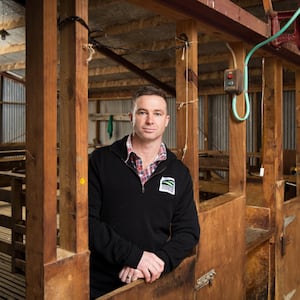World
Strong Wool Sector Faces Challenges Amid Declining Market Share

The strong wool industry is experiencing significant challenges, with its contribution to farm income plummeting from 65% in the 1980s to just 1-2% today. This dramatic decline highlights the need for farmers to support innovative initiatives aimed at revitalizing the sector. According to Statistics New Zealand, sheep numbers have also dropped by 21% over the past decade, further exacerbating the struggles faced by wool producers.
The rise of synthetic fibres in the 1970s marked a pivotal shift in consumer preferences. These alternatives gained popularity due to their lower cost and convenience, which led to a significant loss of market share for traditional wool. As a result, many farmers are now grappling with shrinking profit margins and the need to adapt to changing market demands.
Reflecting on the past, Richard Dawkins, a farmer with deep roots in the wool industry, recalls his childhood memories of sheep shearing. “I remember hot summer days after weaning, shearing our mixed-aged and two-tooth mid-micron Corriedale ewes,” Dawkins said. He reminisced about the sounds of handpieces and the communal effort of his father and grandfather as they prepared the fleeces for pressing. In those days, wool was a primary source of income, significantly shaping the family’s livelihood.
As the industry faces these pressing challenges, the focus is shifting towards innovation and collaboration. Farmers are encouraged to rally behind changemakers who are exploring new avenues to enhance the value of wool. This includes initiatives aimed at promoting sustainable practices and developing unique wool products that can capture the interest of modern consumers.
The need for change is urgent. With wool’s market position increasingly threatened, stakeholders within the industry must work collectively to find solutions. The future of the strong wool sector hinges on the willingness of farmers to embrace new strategies and support emerging ideas that can breathe life back into this once-thriving industry.
As the wool market continues to evolve, the introduction of new technologies and sustainable practices could play a crucial role in revitalizing interest in strong wool. By capitalizing on the natural properties of wool, including its durability and biodegradability, farmers may find ways to appeal to environmentally conscious consumers.
In conclusion, the strong wool sector stands at a crossroads. The challenges are formidable, but with the commitment of farmers and the support of innovative thinkers, there is hope for a resurgence. By working together, the industry can redefine its future and reclaim its place in the agricultural landscape.
-

 World4 months ago
World4 months agoTest Your Knowledge: Take the Herald’s Afternoon Quiz Today
-

 Sports4 months ago
Sports4 months agoPM Faces Backlash from Fans During Netball Trophy Ceremony
-

 Lifestyle4 months ago
Lifestyle4 months agoDunedin Designers Win Top Award at Hokonui Fashion Event
-

 Entertainment4 months ago
Entertainment4 months agoExperience the Excitement of ‘Chief of War’ in Oʻahu
-

 Sports4 months ago
Sports4 months agoLiam Lawson Launches New Era for Racing Bulls with Strong Start
-

 World5 months ago
World5 months agoCoalition Forms to Preserve Māori Wards in Hawke’s Bay
-

 Lifestyle4 months ago
Lifestyle4 months agoDisney Fan Reveals Dress Code Tips for Park Visitors
-

 Health4 months ago
Health4 months agoWalking Faster Offers Major Health Benefits for Older Adults
-

 Politics4 months ago
Politics4 months agoScots Rally with Humor and Music to Protest Trump’s Visit
-

 Top Stories5 months ago
Top Stories5 months agoUK and India Finalize Trade Deal to Boost Economic Ties
-

 Health2 months ago
Health2 months agoRadio Host Jay-Jay Feeney’s Partner Secures Visa to Stay in NZ
-

 World5 months ago
World5 months agoHuntly Begins Water Pipe Flushing to Resolve Brown Water Issue









